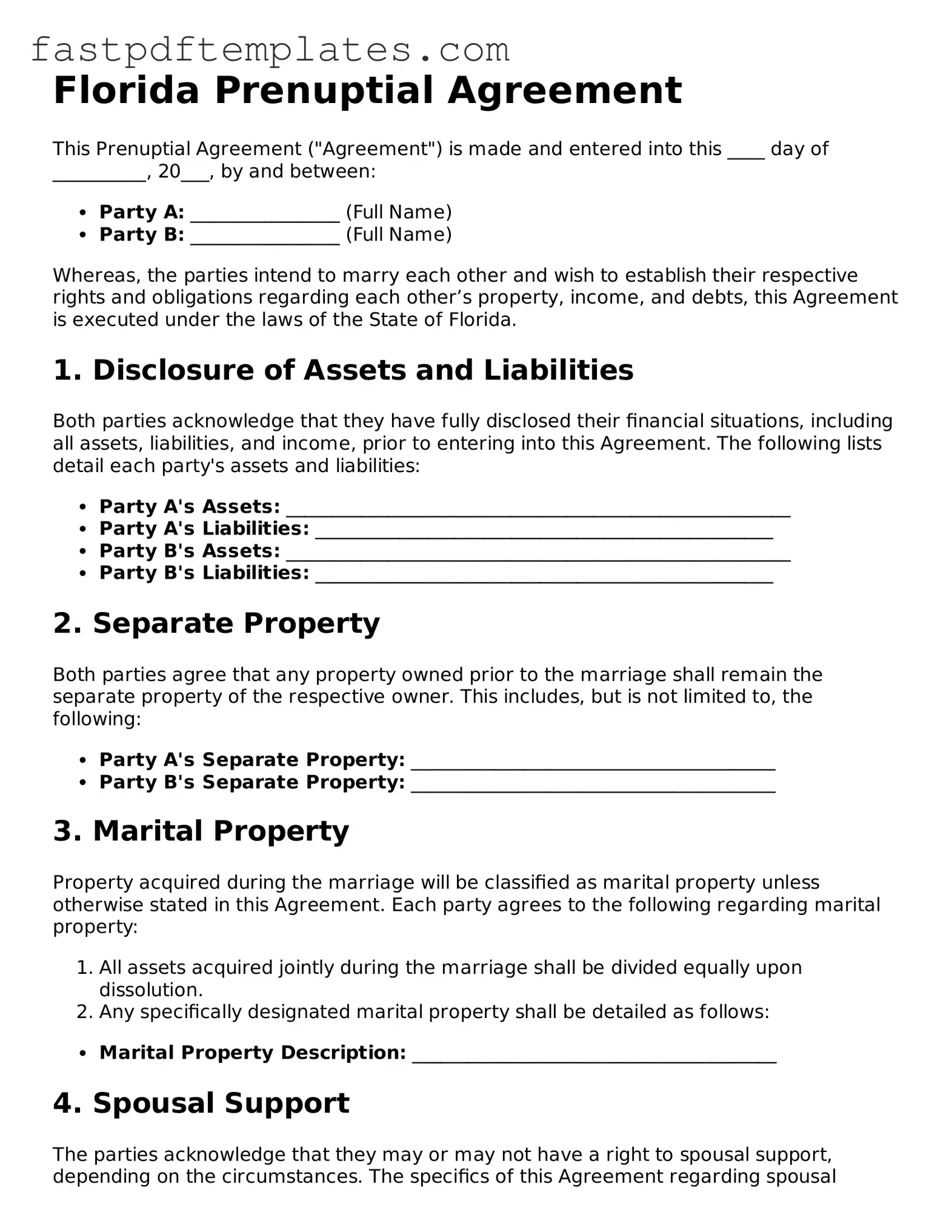Florida Prenuptial Agreement
This Prenuptial Agreement ("Agreement") is made and entered into this ____ day of __________, 20___, by and between:
- Party A: ________________ (Full Name)
- Party B: ________________ (Full Name)
Whereas, the parties intend to marry each other and wish to establish their respective rights and obligations regarding each other’s property, income, and debts, this Agreement is executed under the laws of the State of Florida.
1. Disclosure of Assets and Liabilities
Both parties acknowledge that they have fully disclosed their financial situations, including all assets, liabilities, and income, prior to entering into this Agreement. The following lists detail each party's assets and liabilities:
- Party A's Assets: ______________________________________________________
- Party A's Liabilities: _________________________________________________
- Party B's Assets: ______________________________________________________
- Party B's Liabilities: _________________________________________________
2. Separate Property
Both parties agree that any property owned prior to the marriage shall remain the separate property of the respective owner. This includes, but is not limited to, the following:
- Party A's Separate Property: _______________________________________
- Party B's Separate Property: _______________________________________
3. Marital Property
Property acquired during the marriage will be classified as marital property unless otherwise stated in this Agreement. Each party agrees to the following regarding marital property:
- All assets acquired jointly during the marriage shall be divided equally upon dissolution.
- Any specifically designated marital property shall be detailed as follows:
- Marital Property Description: _______________________________________
4. Spousal Support
The parties acknowledge that they may or may not have a right to spousal support, depending on the circumstances. The specifics of this Agreement regarding spousal support include:
- Amount: ________________________________________________________
- Duration: ______________________________________________________
5. Disclosure and Waiver
Each party agrees that all financial disclosures made are accurate and complete. They further waive any claims concerning property not specifically accounted for in this Agreement, so long as the property division aligns with the terms outlined herein.
6. Governing Law
This Agreement shall be governed by and construed in accordance with the laws of the State of Florida. In the event of any disputes regarding this Agreement, the parties agree to seek resolution through mediation prior to pursuing legal action.
7. Final Provisions
This Agreement constitutes the entire understanding between the parties and supersedes all prior discussions or agreements regarding the same subject matter. Any amendments to this Agreement must be made in writing and signed by both parties.
IN WITNESS WHEREOF, the parties have executed this Prenuptial Agreement as of the date first above written.
_____________________________________________________
Party A Signature
_____________________________________________________
Party B Signature
_____________________________________________________
Witness Signature
_____________________________________________________
Witness Signature
